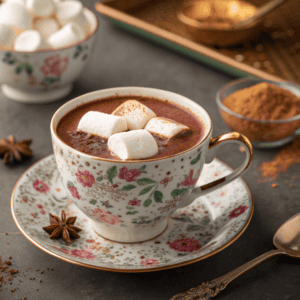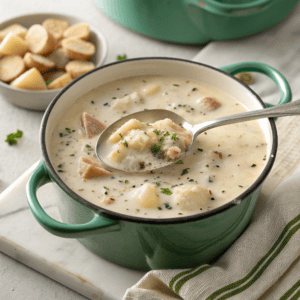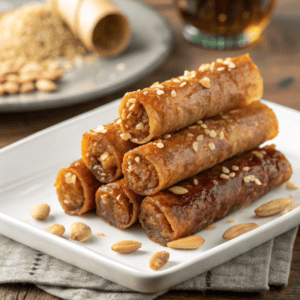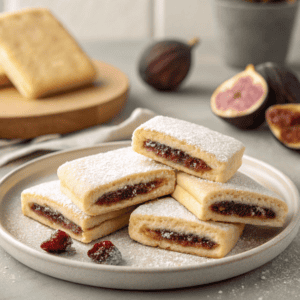If you’re sipping matcha but still wondering why the benefits seem hit or miss, timing might be the missing ingredient. The best time to drink matcha latte depends on what you’re looking for—whether it’s calm focus, steady energy, or even a little metabolism boost. Unlike coffee, matcha releases its caffeine slowly, thanks to L-theanine, so when you drink it can seriously affect how it feels.
In this guide, we’ll break down exactly when to enjoy your matcha for the biggest payoff—whether it’s before a workout, a work call, or your first bite of breakfast.
Table of Contents
Best Time to Drink Matcha Latte: Why Your Morning Routine Matters
Morning Rituals & Matcha Memories
There’s something almost sacred about early mornings—the stillness before the world stirs, the light creeping through the blinds. Back when I was juggling construction jobs and trucking routes across Texas, mornings were a blur. I’d grab a gas station coffee and keep it moving. But once life slowed down just outside Austin, I finally had space to breathe. That’s when matcha entered the picture.
I still remember my first homemade matcha latte. It wasn’t perfect—lumps, too bitter—but something about it stuck. The calm energy hit different. Not the jolt I was used to from coffee, but a steady kind of alertness. I was hooked. And soon, it became part of my morning rhythm: whisked in a warm mug, sipped slow while packing my kids’ lunches or outlining new recipes.
But here’s what I learned the hard way—the best time to drink matcha latte isn’t right after waking up. It’s not something to slam down in the dark. Matcha works with your body’s rhythm. When I started drinking it mid-morning—after a bit of food, some water, and a little movement—I felt clearer, calmer, more focused. The difference was real.
Why Timing Matters With Matcha
Matcha isn’t your average energy boost. It’s got caffeine, sure—but it’s paired with L-theanine, a natural amino acid that smooths the ride. That combo is why matcha gives you hours of clean, focused energy instead of a sharp spike and crash. But here’s the trick: it only works like that if you drink it at the right time.
Your cortisol—your natural energy hormone—is already peaking between 7 and 9 a.m. If you slam a matcha latte during that window on an empty stomach, it may compete with what your body’s already doing. You might feel jittery, or it might not hit at all. That’s why the sweet spot for the best time to drink matcha latte usually falls between 9 and 11 a.m., after a light breakfast.
Drinking matcha too late in the day, say after 3 p.m., can also mess with your sleep. Even though it feels smoother than coffee, matcha still carries caffeine. So finding your window—usually mid-morning—is key to making the most of what matcha offers.
Best Times to Drink Matcha Latte (According to Science & Lifestyle)
Best Time for Focus & Productivity
If you’re trying to stay sharp without overloading on caffeine, mid-morning is often the best time to drink matcha latte. Somewhere between 9 and 11 a.m., your cortisol levels have started to settle, making it the perfect window to introduce gentle, focused energy into your day. That’s when matcha steps in—not loud like coffee, just smooth and steady.
This is when I personally feel the most dialed in. That calm alertness matcha delivers? It’s real. Especially when you’re trying to:
- Dive into writing, recipe testing, or any deep focus work
- Stay sharp during morning meetings or planning sessions
- Keep your cool while juggling home tasks and family needs
Just make sure you’ve eaten something small beforehand—your body absorbs the antioxidants and caffeine more easily with food. I usually go for a light breakfast, then sip matcha slowly while easing into the day. Trust me, that simple change made my mornings way more productive.
Best Time for Energy & Fat Burn
If you’re drinking matcha to fuel your workout or support fat metabolism, timing it right is everything. From my own routine, the best time to drink matcha latte for that kind of energy is about 30 to 45 minutes before exercise. Not only does it provide a smooth lift, but it also enhances focus and endurance—without feeling over-hyped.
Here’s when matcha can make a real difference:
- Before a strength session or brisk walk
- As a pre-yoga boost without the crash
- During midday slumps when you’d usually reach for snacks
Stick with a clean version—no added sugars, no syrups. I like mine with hot water and a splash of almond milk. That combo keeps it light, focused, and effective.
If you’re looking to mix things up, I’ve put together some of my favorite matcha latte recipes—perfect whether you want an energizing boost or something smoother for slower mornings.
When Not to Drink Matcha Latte (Timing Mistakes to Avoid)
Avoiding Matcha Before Bed
Even though matcha gives a cleaner buzz than coffee, it still contains caffeine—and that means timing matters. One of the biggest mistakes I made was thinking it was safe to sip in the evening just because it felt “lighter.” Truth is, even with the L-theanine calming effect, matcha can stay in your system for 4 to 6 hours, sometimes longer. That late-day cup? It can quietly sabotage your sleep.
So when is the best time to drink matcha latte if you want to avoid tossing and turning all night? The answer: earlier in the day. Ideally, finish your last cup by 2 or 3 p.m., especially if you’re caffeine-sensitive or trying to protect your sleep schedule.
A few evening-friendly tips:
- Cut matcha off by early afternoon to give your body time to reset
- Skip caffeine entirely after lunch if you struggle with restlessness
- Try a nighttime herbal tea instead to help you wind down naturally
At the end of the day, the best time to drink matcha latte just isn’t at night. Your body needs the downtime, and caffeine—even in a gentler form—can get in the way of true rest.
Matcha Timing & Meals
Another piece folks often overlook is how matcha interacts with food. Drinking it right after a heavy meal? Not ideal. Matcha contains tannins, which can block your absorption of certain nutrients when paired with rich or protein-heavy dishes. On top of that, it might slow down digestion or cause bloating.
From my own routine, the best time to drink matcha latte around meals is:
- 30 minutes before eating if you want that pre-meal clarity and digestive support
- At least one hour after a meal if you’re using it as a midday pick-me-up
If you’ve got a sensitive stomach, try sipping matcha on a light stomach—with fruit or a small bite beforehand. And if you’re looking for a smoother café-style experience, these Starbucks-inspired matcha latte ideas let you enjoy the flavor without sacrificing timing or balance.
In short, when you drink matcha matters just as much as what you drink. Get the timing wrong, and you might miss the magic.
Tailoring Matcha Timing to Your Lifestyle
Matcha for Different Goals (Focus, Relaxation, Workout)
If you’re still wondering when the best time to drink matcha latte is, the truth is—it depends on what you want from it. Matcha isn’t a one-size-fits-all drink. Some folks sip it for that calm focus at work. Others use it to fuel a workout. And a few just want to ease off coffee but still stay alert without the crash.
Here’s a quick guide that helps you match your timing to your goal:
| Your Goal | Best Time to Drink Matcha Latte |
|---|---|
| Mental focus | Between 9–11 a.m., after light breakfast |
| Workout fuel | 30–45 minutes before exercise |
| Digestive support | 30 minutes before or 1 hour after meals |
| Relaxed alertness (afternoon) | Before 2 p.m. to avoid sleep disruption |
The beauty of matcha is that it adapts to you. If you’re new to it, experiment a bit. Try a week of mid-morning matcha and see how it fits into your day. Then try using it before your workouts and compare the difference.
Need ideas on how to prepare your matcha based on the time of day? These matcha latte recipes cover everything from energizing blends to creamier, calming versions—perfect whether you’re kickstarting your morning or prepping for a light workout.
How to Maximize Matcha’s Effects
Once you’ve locked in the best time to drink matcha latte, a few small tweaks can help you squeeze even more out of each cup. It’s not just about when you drink it—it’s also how you prepare it.
Here are some tried-and-true tips I follow myself:
- Use ceremonial-grade matcha for clean flavor and higher nutrients
- Avoid dairy, especially cow’s milk—try almond or oat milk instead to support antioxidant absorption
- Add-ins matter: a splash of lemon helps your body take in catechins (the good stuff) more efficiently
- Stay consistent: drinking matcha at the same time each day improves long-term benefits
Also, avoid pairing matcha with iron-rich foods like red meat or spinach-heavy meals. Tannins in green tea can block iron absorption, especially if you drink it immediately after eating.
FAQs About the Best Time to Drink Matcha Latte
When should you drink matcha latte?
The best time to drink matcha latte is typically between 9 and 11 a.m., after your cortisol levels stabilize and before lunch. This is when you’ll get the smoothest energy boost without the jitteriness of coffee. If you’re looking for mental clarity or productivity, this mid-morning window helps matcha’s natural caffeine and L-theanine work in sync to give you steady focus.
Is it better to have matcha before or after a meal?
It’s usually better to drink matcha about 30 minutes before a meal or at least one hour after. That way, your body can absorb the antioxidants and amino acids without interference from heavy digestion. Drinking matcha immediately after a full meal, especially one rich in iron or protein, may dull its benefits or upset your stomach.
How to drink matcha for best results?
To get the most out of your matcha, use high-quality ceremonial-grade powder, whisk it properly, and skip dairy if possible. Drink it at the best time for your goal—whether that’s focus, exercise, or digestion. Matcha works best when it’s part of a consistent routine, paired with light meals or snacks, and consumed when your body needs that steady, clean energy.
Should I drink matcha latte before or after a workout?
You’ll get the biggest benefit if you drink your matcha latte 30 to 45 minutes before your workout. That’s when the natural caffeine kicks in to enhance focus and endurance, while the antioxidants help support recovery. It’s a cleaner, more stable pre-workout fuel compared to sugary drinks or heavy coffee.
The Final Sip: Best Time to Drink Matcha Latte, Your Way
At the end of the day, finding the best time to drink matcha latte isn’t about following a strict rule—it’s about listening to your body and pairing that green goodness with your daily rhythm. Whether you’re chasing clear-headed focus in the morning, a boost before your workout, or support for digestion, matcha delivers when you time it right.
Start slow. Try it mid-morning for a week. Or swap your pre-workout for a clean matcha blend. What matters most is making it part of your routine in a way that feels good—not forced.
And if you need a place to start, check out how I make my own creamy, no-fuss matcha latte at home. It’s simple, flexible, and designed to fit real life—just like everything here at Hearty Home Recipes.
Now go grab your whisk, pour a cup, and give your day a better kind of energy.
Want more cozy, real-life recipes like this one?
Follow along on Facebook and Pinterest where I share daily comfort food ideas, matcha creations, and kitchen tips straight from my home to yours. Let’s cook up something good together—one post at a time.





